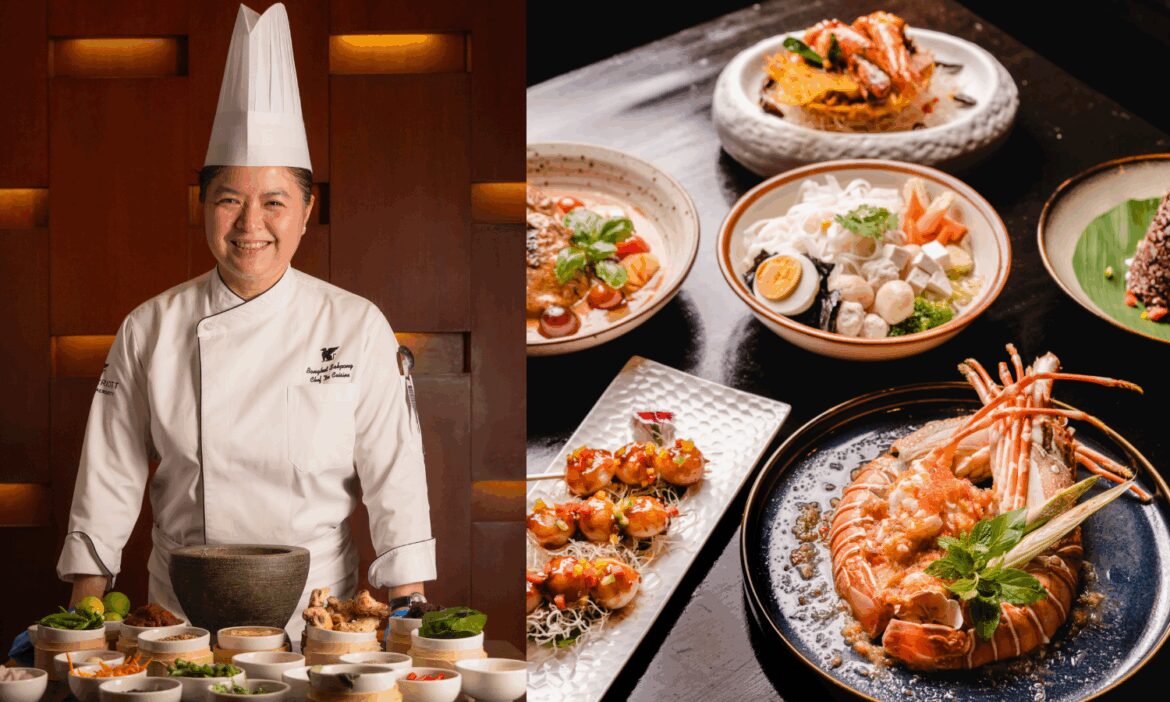In conversation with Chef Bongkot, guest chef at JW Marriott New Delhi Aerocity, who brings a soulful, modern interpretation of Thai cuisine to India. From her Chiang Mai childhood memories to sourcing authentic ingredients in India, the chef speaks about balancing tradition with innovation, her love for Pad Thai, and how the principles of sanuk (joy) and namjai (generosity) guide her approach to food.
Excerpts
How do you keep your food authentic after giving Thai cuisine a modern twist?
Authenticity in Thai cuisine begins with ingredients and technique. I work with staples like lemongrass, Thai basil, kaffir lime leaves, and alongside aromatic spices, fish sauce, tamarind, galangal, and fresh chilies, often sourcing them from local markets or trusted suppliers committed to quality and freshness. These ingredients are the foundation of Thai flavor. To add a modern edge, I experiment with presentation, texture, and technique while keeping the original flavor intact. For example, I might serve Tom Yum as a light foam or present Pad Thai as a crispy rice paper roll. I also use methods like sous-vide for consistency, especially with proteins. Fusion plays a role too, such as pairing Thai chili paste with grilled meats from Western cuisines. What ties it all together is storytelling. Every dish has a cultural context and a memory behind it. My goal is to preserve that heritage while presenting it in a way that feels fresh and relevant.
Can you share a memorable culinary experience that shaped your cooking style?
One defining experience was spending a summer with my grandmother in Chiang Mai when I was sixteen. Unlike the fast-paced cooking I was used to in Bangkok, she used woodfire, no timers, and no measurements. Watching her prepare khao soi from scratch taught me that Thai cooking is intuitive. She cooked by scent, sound, and taste. That summer shaped how I understand flavor. Even today, in professional kitchens with modern tools, I return to that moment. I might serve khao soi in a refined format, but the soul remains the same. It taught me that authenticity is not about rigid tradition but about honoring the intention behind each dish. My style now blends those early lessons with global techniques and creative expression.
How do you select and source ingredients for your dishes and your favourite ingredient to work with?
Sourcing Thai ingredients in India has been both a challenge and a creative opportunity. I focus on essentials like bird’s eye chili, Thai basil, lemongrass, and galangal, working with specialty suppliers or partnering with local farmers who are open to cultivating Asian herbs. When ingredients are unavailable, I adapt thoughtfully. For example, I may use Indian basil in place of Thai basil, adjusting other components to maintain balance. My favorite ingredient is lemongrass. Its bright citrus aroma is central to many Thai dishes and instantly reminds me of home. I have found excellent lemongrass in parts of South and Northeast India, and it’s become a constant in my kitchen. Ultimately, ingredient sourcing is about respect, intention, and adaptability. Cooking in India has taught me that authenticity isn’t rigid—it’s alive, adaptable, and deeply rooted in how we connect with the ingredients we choose.
What sets your Thai culinary journey at JW Marriott New Delhi Aerocity apart from other dining experiences?
What makes this experience unique is the blend of traditional Thai flavors with Marriott’s commitment to excellence in hospitality. The setting allows me to honor authentic recipes while tailoring menus to diverse, evolving guest preferences. Our focus is on thoughtful storytelling, refined plating, and immersive dining. Dishes like Green Curry or Tom Yum are prepared with precision, using quality ingredients that reflect both Thai heritage and the richness of Indian produce. Working in a high-performance kitchen with chefs from around the world keeps me inspired and constantly evolving. It is not just about serving Thai food. It is about creating an experience where flavor, design, and service come together to tell a meaningful story.
How do you incorporate the principles of sanuk and namjai into your cooking?
Sanuk is the joy in what we do, and namjai is the spirit of generosity. These values guide my kitchen every day. Cooking is never just a task — it is a creative, energizing process. I encourage my team to cook with curiosity and joy, because when the process is filled with positive energy, it shows in the food. Namjai is about giving with sincerity. Whether I am adjusting a dish for a guest’s preference or sharing the background of a recipe, it comes from a place of care. Even a small detail like a garnish carries meaning. Through these principles, I aim to create meals that not only taste good but feel good too.
What’s your favourite dish to prepare and what makes it special to you?
Pad Thai is the dish closest to my heart. It may seem simple, but every component — the chewy noodles, tamarind tang, crunchy peanuts, and fresh herbs — must be in perfect balance. Growing up, Pad Thai was a street food staple and a symbol of family and community. I remember watching vendors cook it over open flames and sharing it with neighbors during celebrations. Today, I refine it with better balance and plating, but the heart of the dish remains the same. Pad Thai reminds me why I cook — to create something comforting, authentic, and deeply connected to people.

